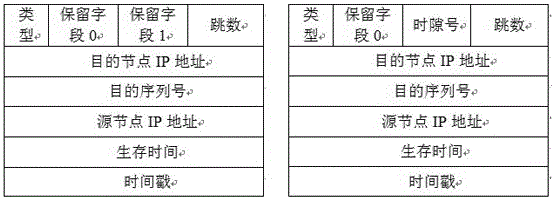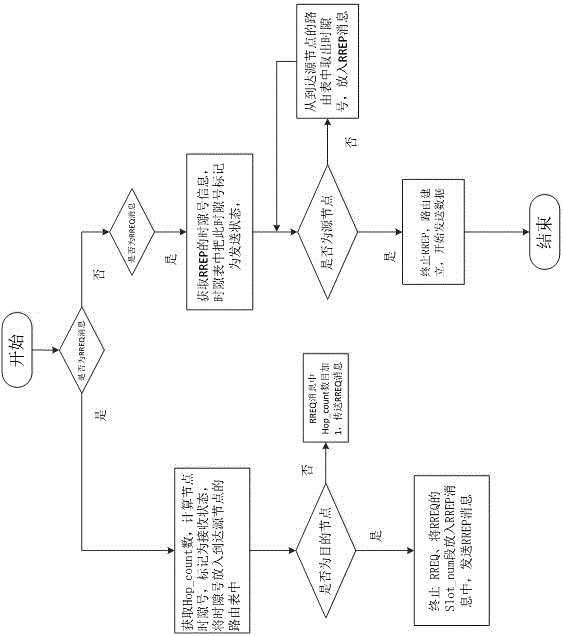Timeslot multiplexing wireless chain multi-hop cross-layer method
A time slot multiplexing and wireless link technology, applied in wireless communication, electrical components, synchronization devices, etc., can solve problems such as channel waste
- Summary
- Abstract
- Description
- Claims
- Application Information
AI Technical Summary
Problems solved by technology
Method used
Image
Examples
Embodiment Construction
[0021] The present invention will be further described below in conjunction with the accompanying drawings and specific embodiments.
[0022] Such as figure 1 As shown, the slot frame structure in the present invention is the slot cycle, which is composed of control slots and data slots. Control slots include slot 0 and slot 1. Nodes regularly send and receive HELLO messages in time slot 0. The Hello broadcast message contains all the neighbor nodes and their link information of the Ad Hoc network node. Each node in the network completes the link through the link information in the Hello broadcast message. Probing, adjacent area detection; the node sends RREQ and RREP messages in time slot 1 for route discovery and route establishment. The data slots include slot 2, slot 3 and slot 4. After the route is established, nodes receive and send data packets in data slots. The present invention uses three time slots for data transmission to ensure that any two nodes outside the t...
PUM
 Login to View More
Login to View More Abstract
Description
Claims
Application Information
 Login to View More
Login to View More - R&D
- Intellectual Property
- Life Sciences
- Materials
- Tech Scout
- Unparalleled Data Quality
- Higher Quality Content
- 60% Fewer Hallucinations
Browse by: Latest US Patents, China's latest patents, Technical Efficacy Thesaurus, Application Domain, Technology Topic, Popular Technical Reports.
© 2025 PatSnap. All rights reserved.Legal|Privacy policy|Modern Slavery Act Transparency Statement|Sitemap|About US| Contact US: help@patsnap.com



